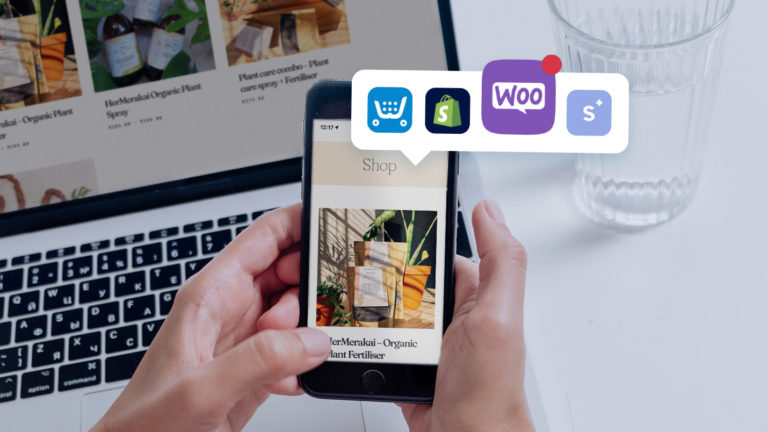8 great blogging tips for small business owners

Edric
22 Aug, 2022
In 2021, I decided to start printing my own T-shirts. The whole concept was completely new to me, and I had no idea where to start. So, I started with a Google search and came across a few blogs and videos that pointed me in the right direction. I realized I’d probably need a heat press, but I was unsure of what a heat press was, how to use it and where to get one.
During my search for more info, I came across JG Electronics. Their product pages are structured like mini-blogs with informative how-to content followed by videos and descriptions of their products. After perusing their content, I was left with a really good understanding of how to print T-shirts at home using a heat press. Now I’m a proud owner of one of their awesome neon-green heat press machines, and my collection of self-printed graphic Tees is growing nicely.
With the internet at their fingertips, many consumers like myself do research before buying a product. A blog is a powerful tool you can use to connect with potential customers and build their trust. In fact, small businesses like JG Electronics that blog tend to get 126% more lead growth than small businesses without a blog.
Read more: What is blogging, and how to start
Not only can you use a blog to promote your business and the products and services you offer, but your small business blog can also help you build a brand that makes your business stand out from your competition.
Your brand and business can benefit from blogging in many more ways. Use the tips below to get the most from your small business blog.
- Use a blog to build your brand
- Share insights about what makes you better than your competitors
- Add CTAs to your blog to convert customers
- Add blogs to your content calendar
- Create content you can distribute across your channels
- Use your blog to improve your SEO
- Measure the performance of your blog with Google Analytics
- Use an SEO plugin to optimise your blog
Tip 1: Use your small business blog to build your brand
Your brand is how your customers identify you or your business. It’s helpful to think of a brand as all the intangible things that help customers identify and differentiate your business from your competitors. It includes elements like your:
- business logo,
- brand colours,
- brand values,
- what your customers feel when they interact with your brand
- and the messages you share about your brand.
Having a strong brand is important for any business, but it’s crucial for small businesses. In a competitive marketplace, a well-defined brand can help a small business stand out from the crowd and attract new customers. Branding can also be used to build trust and credibility with potential customers. After all, when consumers are considering two similar products or services, they’re more likely to choose the one that they recognize and trust. For small businesses, building a strong brand can be the key to success. Your small business blog can help build and shape your brand.

Share your expertise
No one knows your products or services as you do. Sharing your knowledge with your customers doesn’t only help you promote your products and services; it also helps you establish yourself as a thought leader or expert in your industry.
Your readers will share, reference, and engage with your blog posts if they find them valuable and knowledgeable. When you provide your reader with an answer or solution to their problem or pain point, it will automatically build their trust in you. A reader who trusts you is more likely to become a customer that buys from you. I’m sure you also prefer to buy things from people who are passionate about their craft and know what they are talking about.
Communicate your Brand Values
Consumers these days often choose which business to buy from based on whether the values of a business align with their brand. When you start building your brand, one of the things you need to do is develop a set of brand values. These values may be centred on:
- customer centricity,
- care for the environment,
- commitment to providing a high-quality service or product,
- community,
- privacy, etc.
If you want your customers to associate your brand with these values, you will have to act and communicate in ways that reinforce these values. Share stories about how your business and staff live these brand values on your blog. This is incredibly important for NPOs and other charitable organisations that need to secure donations from the public. A blog will help your charitable organisation connect with readers and donors who share your values and who want to support your cause.
Now that you know how to build a brand with your blog, let’s discuss some specific things you should blog about.
Tip 2: Share insights about what makes your products and services better than your competitors
Online shoppers spend about 50% of their shopping time researching products online. Use your blog to share entertaining and informative content about your products and services. Online shoppers need as much information as possible about your business and products when making purchase decisions.
If you’re offering a service, you can use your blog to share valuable industry insights, your opinions on best practices in your industry, and case studies of how people have used the services you provide. Online audiences love to consume lots of different types of content. Your blog is a great place to share your product pictures and explainer videos with your readers. You can also write stories about the products you sell and your industry. This is a super-smart tactic, especially for fashion products like shoes!
The Lemkus blog executes this strategy incredibly well. Lemkus is a premium footwear and streetwear brand in South Africa, and they are one of the best. The team at Lemkus uses their blog to build a community by sharing and promoting:
- product release dates,
- Lemkus podcast episodes (these episodes tend to put a spotlight on South Africa’s arts and culture, like in the interview with Meghan Daniels, we get an exclusive glimpse into Meghan’s filmmaking journey)
- and Lemkus community events.
The idea is to find creative ways to use your blog to connect with your customers and promote your brand. Think about what content will work best for your blog. Make sure you include links to your products in your blog posts so your customers can easily see what you have to offer.
By now, you can see a blog is an amazing promotional tool, but it can also help you convert customers directly when you use calls to action and booking forms on your small business blog!
Read more: An essential guide to online marketing for small businesses
Tip 3: Add CTAs to your blog to convert customers
Adding calls to action to your blog can be a great way to convert customers. By including calls to action, you give readers a specific and immediate way to engage with your business. For example, you could add a call to action to schedule a consultation, sign up for a newsletter or fill in a booking form.
Booking forms provide an easy way for customers to book appointments or make purchases. Including these forms on your blog makes it easy for customers to take the next step, without having to search for your contact information or visit another website.

If you want to start using booking forms and other engaging forms on your blog, check out Typeform. They have a large selection of forms that are sleek and intuitive; you’ll be able to customize them to suit your business needs.
Knowing what to blog about and how to convert customers using your blog is important, but the real challenge is learning how to blog consistently.
Tip 4: Add blogs to your content calendar
Blogging often will drive your brand awareness. But many people find that one of the hardest parts of maintaining their small business blog is coming up with new content on a regular basis. If you’re struggling to keep up with your blogging goals, you might want to consider adding blogs to your content calendar.
A content calendar is a tool that can help you plan and organize your content. By planning your content in advance, you can make sure that you’ll post your blogs consistently. Best of all, a content calendar can be customized to fit your business needs, so you can make it as simple or as detailed as you like. HubSpot has a full blog editorial calendar template you can download and use right away, so why not give it a try?
Now that you’ve got all this amazing content on your blog make sure you get maximum value for your effort by distributing and sharing your blog content across all your channels.
Read more: 6 tips for the perfect email marketing strategy
Tip 5: Create content you can distribute across your channels
Sharing your posts with your readers will keep you at the top of their minds. Staying at the top of your customer’s mind is an important principle in marketing because it helps drive your sales. Share your blog posts across your social media channels and email newsletters. This will drive traffic and engagement on your blog. It will also help you post consistently across your channels.
You can share your blog article on your channels by:
- Sharing a link to your blog
- Using extracts to build intrigue in your customers
- Share images, charts, or videos from your article
- Create an infographic that sums up your article or
- Highlight quotes that provide value

It’s helpful when creating content for your blog to think about how you’ll be able to distribute and syndicate it across your other channels. For example, you might create short videos to include in your blog posts, which you can publish and host on YouTube. Include a detailed description of your video with relevant keywords and a link to your blog post. This will drive traffic and awareness from YouTube to your blog.
Clearly, a small business blog is a versatile and powerful tool for your business, but did you know a blog can improve your search engine optimization too?
Tip 6: Use a blog to improve your SEO
Search Engine Optimization (SEO) refers to the use of unpaid and organic methods to promote a website or content. This is opposed to using paid ads to promote a website or content.
Creating high-quality content is an important aspect of SEO. Search engines aim to send their users to pages that answer search queries effectively. Use your blog to answer questions users are asking to get organic traffic from search engines. If readers find the information on your blog useful, search engines will reward your website by indexing it higher on search engine results pages. The higher you rank on search engine results pages (SERPs), the more traffic you’ll have coming to your website for free.
Start by researching and finding the keywords people use to search for specific pieces of information. This is known as keyword research. A keyword is what people type into the search bar to look for products, services, places, and other bits of information. For example, when looking for a heat press, I typed in ‘heat press for sale cape town’, which led me to the JG Electronics blog.
Identify keywords that are profitable for your business and use those keywords in your blog. Some useful free resources to find these keywords are Ubersuggest and AnswerThePublic. If you write blog posts that answer users’ search queries effectively and include relevant keywords in your blog posts, search engines will send organic traffic to your web pages. In other words, customers that might not know you and who need your help can now find your business on the internet without having to search for your brand specifically.
Read more: How to market your business using Facebook and WhatsApp
Tip 7: Measure the performance of your blog with Google Analytics
If you want to ensure that your small business blog is optimally successful, you need to take advantage of all the tools at your disposal.
One of the most powerful and useful tools available is Google Analytics. This free service provides a wealth of data that can be used to improve your blog in a variety of ways. For example, Analytics can show you which posts are the most popular with your readers, what time of day people are most likely to visit your blog, and which countries your blog traffic is coming from. Armed with this information, you can make changes to your blog that will encourage more people to read and engage with your content.

In Google Analytics, you can identify which posts your readers are engaging with using the Engagement Report. Under this report, you can view the average engagement time for each post. You want your readers to spend as much time as possible reading and engaging with your blog content.
Use the Average Engagement Time metric to identify posts that have higher engagement times, as this may indicate that your readers are enjoying these specific blog posts. Analyze and compare these posts to ones that have a lower average engagement time to identify which elements are working well on your top performers. You can then add the elements that are working well to the posts that aren’t performing as well.
The elements that you can look at are:
- what headlines, titles, and header images have been used
- blog topic,
- blog length,
- the use of images, infographics, charts, videos,
- and blog structure.
Tip 8: Use an SEO plugin to optimise your blog
Just as you use SEO to make your website visible to search engines, you can also use SEO to ensure your blog posts rank highly.
But SEO is an ever-evolving field. What worked yesterday may not work today, and what works today may be obsolete tomorrow. As a result, it can be difficult to keep up with the latest SEO best practices. One way to stay ahead of the curve is to use an SEO plugin. SEO plugins are regularly updated, and this will help you keep up with the latest changes to best practices in SEO strategy. In addition, they can also provide helpful tips and advice on how to improve your blog’s website’s ranking.
Rank Math and YoastSEO are two great plugins you can use.
Rank Math helps businesses rank their web pages higher in search engine results pages (SERPs). The plugin uses a variety of techniques to achieve this, including tracking and measuring your keyword rankings and providing a detailed SEO analysis of your blog articles. Rank Math has a free and paid version. The free version has limited features, but it will be more than enough to help you with all your blogging SEO needs during the early stages of your blog’s development.
YoastSEO is another WordPress plugin that you can use to optimize your website for search engines. One of its best features is the readability suggestions it offers. These suggestions improve the flow of your sentences and the structure of your articles. YoastSEO also allows you to select a focus keyword for each page and blog post on your website. This ensures that your content is optimized for the search engines and that you have a better chance of ranking higher in the search results. In addition, YoastSEO provides you with an analysis of your site’s SEO health, which can help you identify areas that need improvement. Also, remember to choose reputable web hosting company.
You now know how to start a blog for your small business. Make sure you use these tips to promote your business and build your brand. Take advantage of what you know about keywords, SEO, and blogging. This will give you a competitive edge in your industry.
Blogging is a great long-term traffic-building strategy, so make sure you keep publishing consistently. If you want to learn a lot more about blogging, read this in-depth blogging guide.
Related articles

16 (mostly) free online tools that’ll help you grow your small business
Use these nifty tools to drive your business forward.

4 easy-to-use ecommerce platforms you can use to build your online store
Find a platform that suits the needs of your small business.

6 factors you should consider when starting a business
Use these tips to turn your idea into an operating business.


